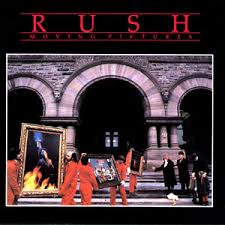 The first glimmerings of Rush began in a Toronto, Ontario, suburb in 1968 when guitarist Alex Lifeson and drummer John Rutsey, who were classmates, formed a band with bassist and lead vocalist Jeff Jones. According to biographer Bill Banasiewicz, Jones was the motivator behind the band, encouraging them to be diligent in their practice schedules. However, Jones soon left the band. Geddy Lee and his inimitable voice replaced Jones, and the legendary Canadian progressive rock band was launched. Both Lifeson and Lee changed their given names, originally Alexander Zivojinovich and Gary Lee Weinrib respectively.
The first glimmerings of Rush began in a Toronto, Ontario, suburb in 1968 when guitarist Alex Lifeson and drummer John Rutsey, who were classmates, formed a band with bassist and lead vocalist Jeff Jones. According to biographer Bill Banasiewicz, Jones was the motivator behind the band, encouraging them to be diligent in their practice schedules. However, Jones soon left the band. Geddy Lee and his inimitable voice replaced Jones, and the legendary Canadian progressive rock band was launched. Both Lifeson and Lee changed their given names, originally Alexander Zivojinovich and Gary Lee Weinrib respectively.
The First Single
The band bounced around the Toronto bar scene for a while and then released its first single in 1973. Entitled “Not Fade Away,” it was a variation of a Buddy Holly song. Side B contained a unique synthesis, “You Can’t Fight It,” credited to Lee and Rutsey. The single didn’t attract much interest, and as a result the band was released from their contract. The band decided to form its own label, Moon Records.
Rush released its first album, Rush, in 1974. Rush got very little traction until the record was noticed by WMMS, a radio station in Cleveland, Ohio. Donna Halper, a music executive and DJ working at the station, chose “Working Man” for her play lists. Reportedly, callers called the station to ask about the new Led Zeppelin single. Mercury Records picked up the album and U.S. sales began to take off.
Goodbye Rutsey, Hello Neil Peart!
Soon after the album release in 1974, Rutsey left the band due to health problems related to diabetes. His last gig was on July 25, 1974, at Centennial Hall in London, Ontario. Rush held tryouts for another drummer, and in the long run chose Neil Peart as Rutsey’s replacement. Peart formally joined Rush on July 29, 1974, two weeks prior to the group’s first U.S. concert. On August 14th, the new Rush lineup performed its first show together, opening for Uriah Heep and Manfred Mann. More than 11,000 fans watched the show at the Civic Arena in Pittsburgh, Pennsylvania.
New Lyrics
When Peart joined the band as a drummer, he also became the band’s lyricist. Despite writing the lyrics for the first album, Lee reportedly had very little enthusiasm for composing. Instead, Lee focused on the instrumental parts of Rush’s music. Fly By Night (1975), Rush’s first album with Peart, introduced its first epic song, “By-Tor and the Snow Dog,” packed with complex fantastical lyrics. This album was reasonably well-received. Peart’s talent for writing philosophical and mythological lyrics, combined with Lee’s iconic voice, eventually made Rush songs instantly recognizable. Soon after, Rush released Caress of Steal, a five-track collection, but this album didn’t appeal to fans as much as Fly By Night had. It contained two developed multi-part tunes, “The Necromancer” and “The Fountain of Lamneth.” Critics said the album was unfocused and a big deviation from Fly By Night.
The Leap Forward
Rush’s leap forward rode on the backs of its next release, 2112, which helped define the inimitable sound that still defines Rush today. The 20-minute title track was divided into seven segments. The collection was the first taste of financial success and the first platinum record in Canada. The supporting tour for 2112 grew and finally finished with three nights at Massey Hall in Toronto. The three concerts were recorded and became the first live collection titled All the World’s a Stage. “Allmusic” commentator Greg Prato noted that the collection separates the limit between their initial years and the following period of their music.
Solidifying Their Sound
After 2112, they moved to the United Kingdom to record A Farewell to Kings (1977) and Hemispheres (1978) at Rockfield Studios in Wales. Both albums were considered to be more progressive rock. According to RockHall.com, Lee said about the albums:
“As our tastes got more obscure, we discovered more progressive rock–based bands like Yes, Van der Graaf Generator and King Crimson, and we were very inspired by those bands. They made us want to make our music more interesting and more complex, and we tried to blend that with our own personalities to see what we could come up with that was indisputably us.”
In 1980, Rush released Permanent Waves, which was the first deviation from the longer, epic-ish songs Rush was know for and became a Top Five seller in the U.S. The songs were shorter and more radio-friendly, which appealed to a broader audience. At this point, Rush was on a straight trajectory to becoming one the most successful bands in the world. One year later, Rush released Moving Pictures, which became the biggest success as of yet, with songs such as “Tom Sawyer,” “Limelight,” “Red Barchetta,” and “YYZ.”
Rush was here to stay.

